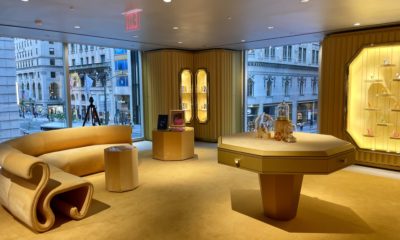I recently found myself with a $25 merchandise certificate to Rite-Aid after transferring a prescription to their pharmacy. I went there expecting to trade in that $25 for dishwashing detergent, a tube of toothpaste, hand soap, razor blades, aspirin.
Imagine my surprise to find a refrigerator case full of milk and ice cream and shelves loaded with soup, candy, juice, chips, soft drinks, crackers and tuna fish.
People may be forgoing luxury items these days, but they won’t stop buying groceries. And so everyone is trying to get in on that act.
Target invested $500 million last year to retrofit many of its general merchandise stores with full-blown food sections. And it now reports that sales and traffic at these stores are about 6 percent higher than at stores without the new grocery areas.
Walgreens has added up to 500 food items in many of its stores. CVS/Pharmacy last year redesigned about 200 of its stores, in urban areas like Boston, Detroit and New York.
My newly renovated Rite-Aid store is bright and appealing, with a natural traffic flow over to the left and rear, where the food items are. By the way, putting that department on the left suggests to me that they regard food as a real destination. (Years ago, Paco Underhill famously pointed out “the invariant right” – the direction nearly everyone goes as she enters the store. Target’s new, expanded food departments, for example, are generally over to the right.)
Advertisement
The department is well-stocked, nicely designed and inviting. It might be surprising right now that you can buy all these items at Rite-Aid. The retailer is hoping the surprise will wear off soon, replaced by habit and routine.
The pharmacy counter, on the other hand, is hidden way in the back of the store, not visible from the entrance. Sacajawea might be useful until Rite-Aid shoppers get to know the new layout. Prescriptions were always the high-profit, big-ticket item for drug retailers, but apparently the profitability of prescription drugs has slipped, with more competition, more resources and more discounting and couponing.
I may be one of the few relics still walking the earth who remembers the old corner drugstore. It filled your prescriptions, sold some over-the-counters (aspirin, cough syrup) and was the neighborhood outlets for tobacco, newspapers, comic books and a chocolate malt at the soda fountain. The drugstore business has changed, of course. Stores grew bigger over the years and became the place to get folding chairs, cosmetics, shoelaces, lightbulbs, toys and games, and have film developed.
Film is vanishing (another relic), but food will never go away. And so Rite-Aid, Walgreens and the rest are trying to react to shoppers’ changing needs. Isn’t that what retail’s all about?

 Headlines2 weeks ago
Headlines2 weeks ago
 Headlines1 week ago
Headlines1 week ago
 Headlines1 week ago
Headlines1 week ago
 Headlines4 days ago
Headlines4 days ago
 Headlines7 days ago
Headlines7 days ago
 Designer Dozen1 week ago
Designer Dozen1 week ago
 Eric Feigenbaum3 days ago
Eric Feigenbaum3 days ago














